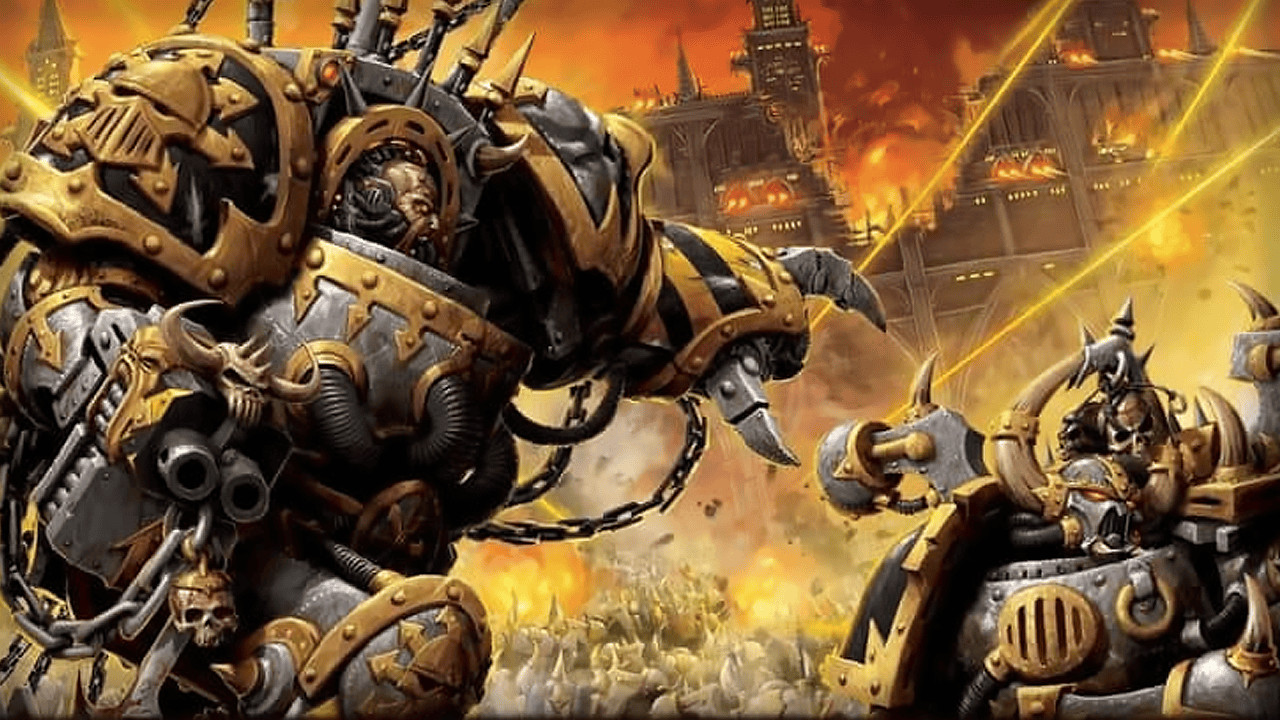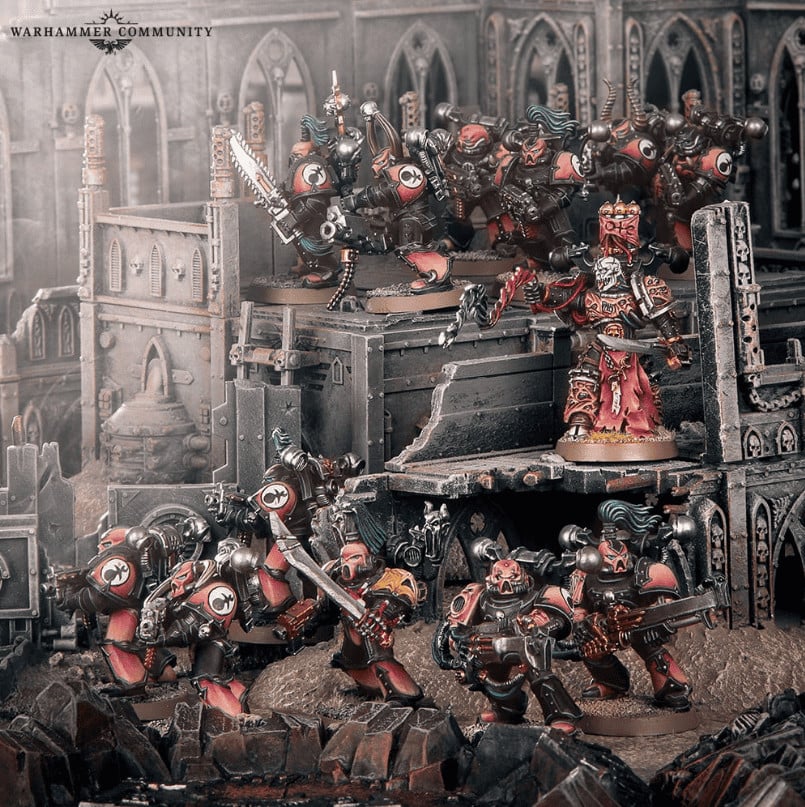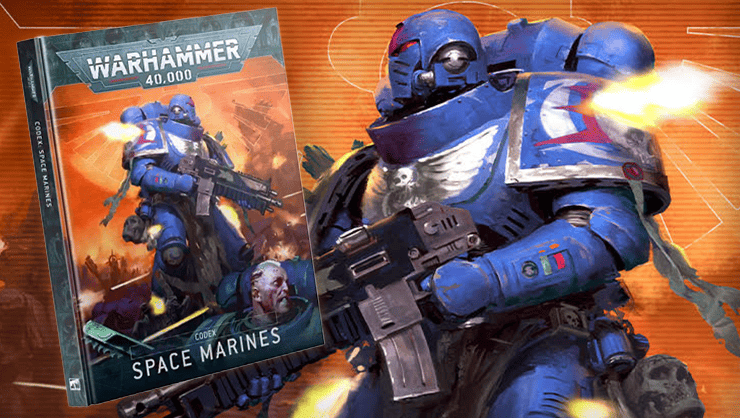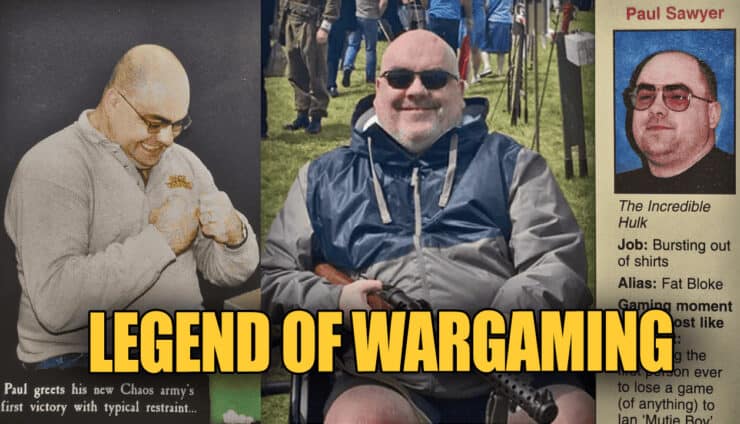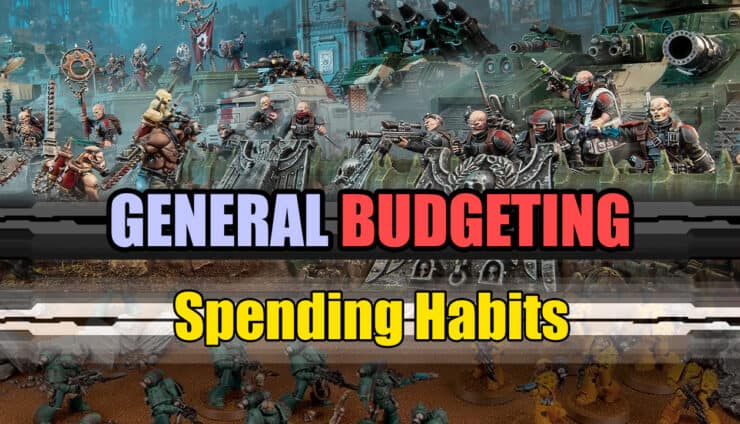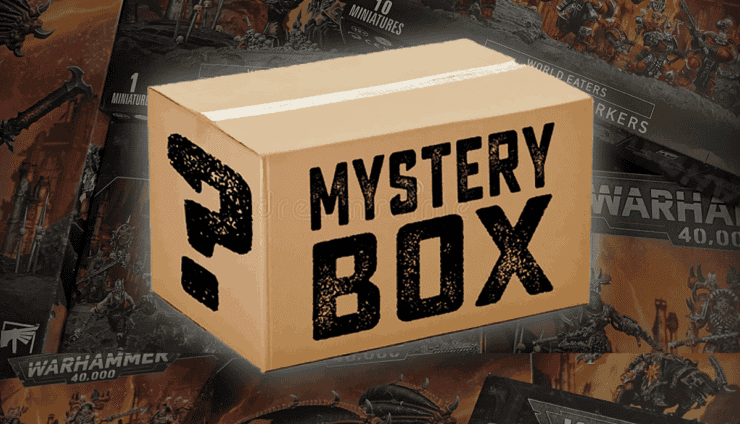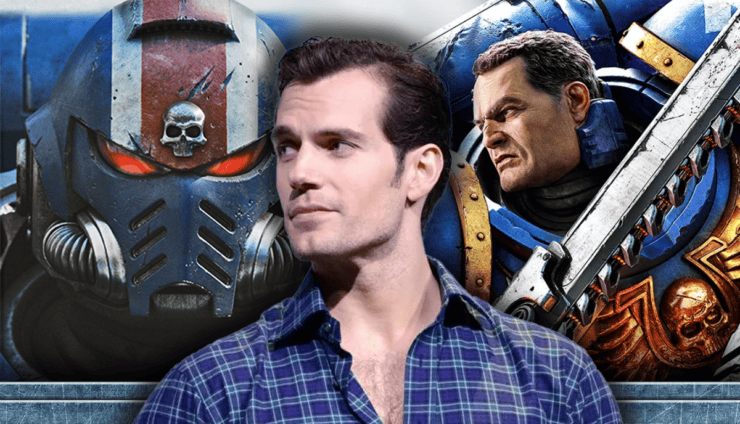Side with the dark gods of Warhammer 40k, from Chaos Space Marines to Daemons; here are the top factions and armies to play!
Updated February 12th, 2024, by Rob Baer with new information and links to relevant content.
Welcome to the dark side of the Warhammer 40K universe! If you’re trying to learn about the chaotic forces that shape the galaxy, you’ve come to the right place. In Warhammer 40K, Chaos isn’t just a bunch of bad guys; it’s a metaphysical concept, an ever-present corrupting force, and a pervasive religion found all over the galaxy. To the Imperium of Man, it’s known as the Arch-Enemy, and trust us, they’re not exaggerating.
If you couldn’t remember them all, these are all the Warhammer 40k factions for Chaos:
- Chaos Space Marines
- Death Guard
- Thousand Sons
- World Eaters
- Chaos Knights
- Chaos Daemons
- Emperor’s Children
Fielding Chaos Armies
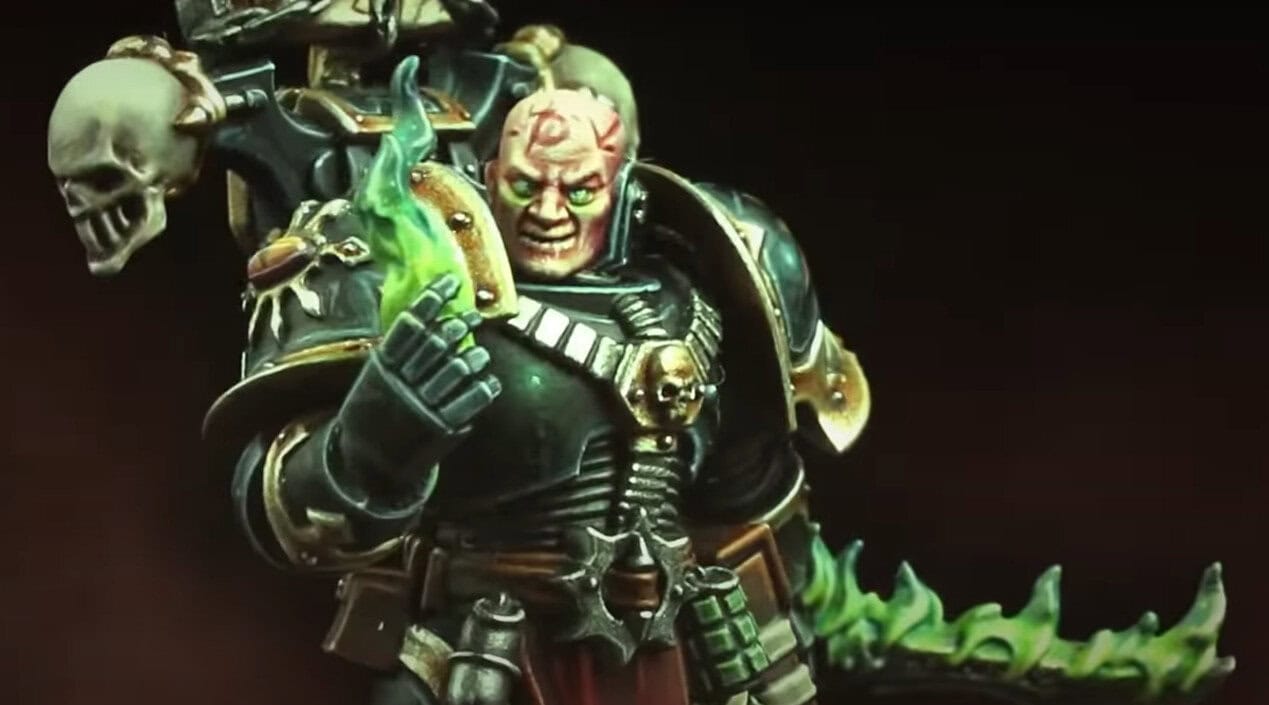
Combining Forces
One of the unique aspects of Chaos armies is the ability to mix and match units from different Chaos factions. This flexibility allows you to create a force tailored to your preferences, combining the best elements of each god’s followers. For example, you could field a core of resilient Plague Marines from the Death Guard, supported by the might of Daemons and the power of Knights.
Painting & Customization
Chaos armies also offer endless possibilities for customization. The corrupted and mutated nature of Chaos units means that no two models need to look alike.
Hobbyists can let their creativity run wild, adding personal touches and unique details to their armies. From rusted and decayed armor to vibrant and otherworldly color schemes, Chaos models are a painter’s dream. Learn about painting your Chaos forces here!
Death Guard
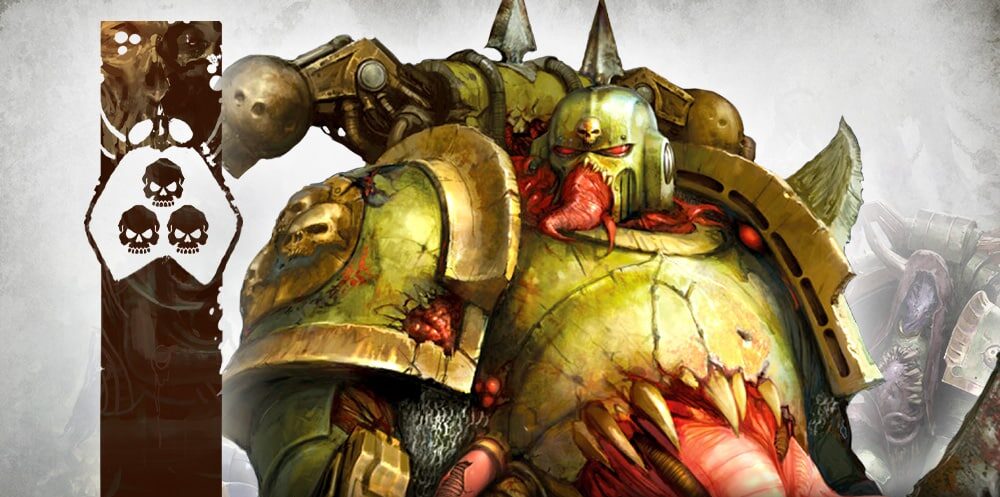
They were the toughest of the tough, able to endure the most toxic environments and survive where others would fall. Mortarion himself was known for his immunity to poisons and toxins, which he demonstrated by drinking deadly substances with no ill effects.
The Fall to Nurgle

Their once-pristine armor became fused with their corrupted flesh, and they became walking vectors of Nurgle’s plagues. On the battlefield, the Death Guard are nearly impossible to kill. Their bodies are riddled with disease, yet they continue to fight, spreading Nurgle’s corruption wherever they go.
Their resilience makes them a formidable opponent, able to withstand immense amounts of damage while slowly advancing toward their enemies. They use this endurance to their advantage, grinding down their foes through sheer attrition.
Units & Tactics
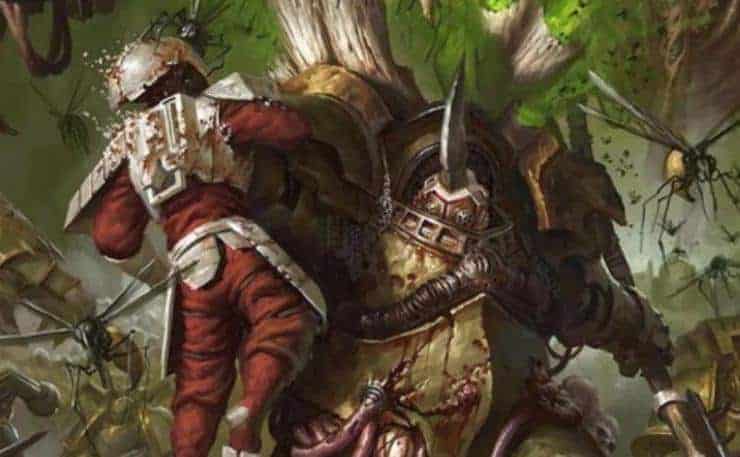
Daemon Engines like the Plagueburst Crawler and Myphitic Blighthauler provide heavy fire support and spread further corruption. Their strategy revolves around slowly advancing and weathering enemy fire, using their durability to outlast their opponents. They also make extensive use of chemical and biological weapons, spreading diseases that weaken and demoralize enemy troops.
If you want to learn how to play the Death Guard in Warhammer 40k, check out our guide on the army here! Or pick up their Combat Patrol Bundle and get hobbying right away!
The Appeal
For hobbyists, the Death Guard offers a unique aesthetic. Their models are grotesque and full of character, with plenty of opportunities for creative painting and customization. From the pus-filled sores and rusted armor to the swarms of flies that accompany them, the Death Guard is a macabre painter’s dream.
Thousand Sons
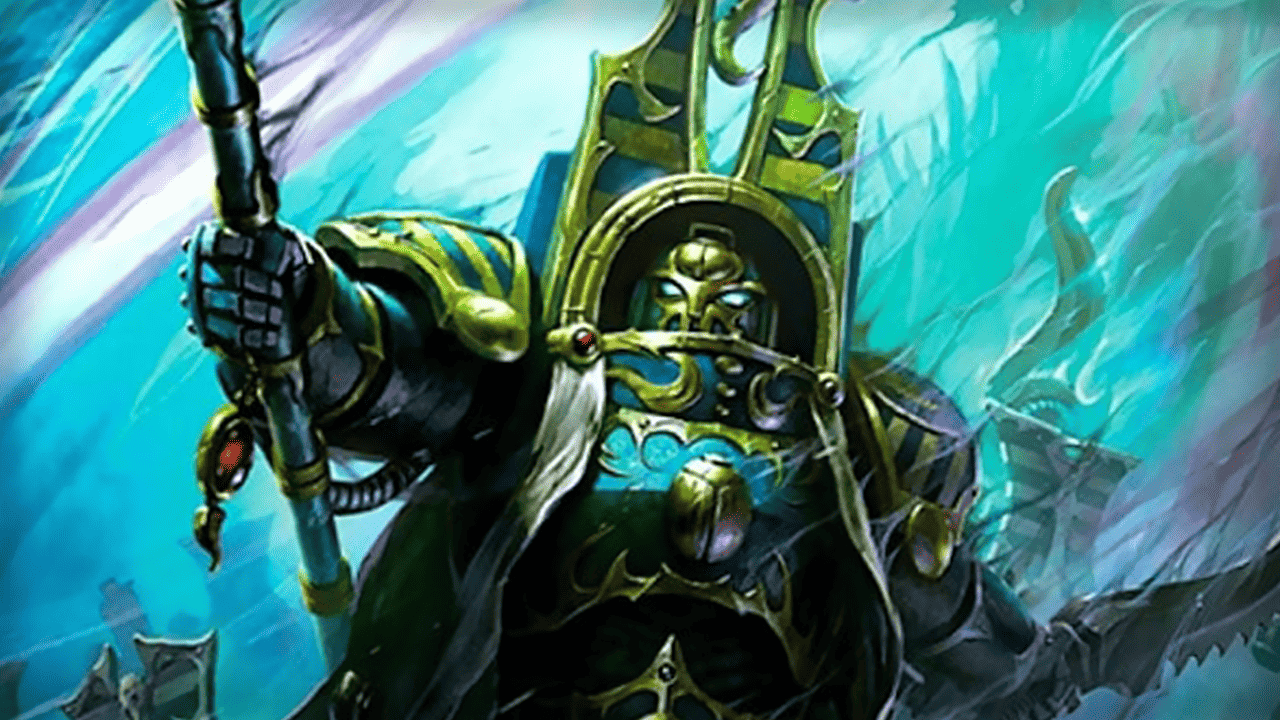
The Fall to Tzeentch
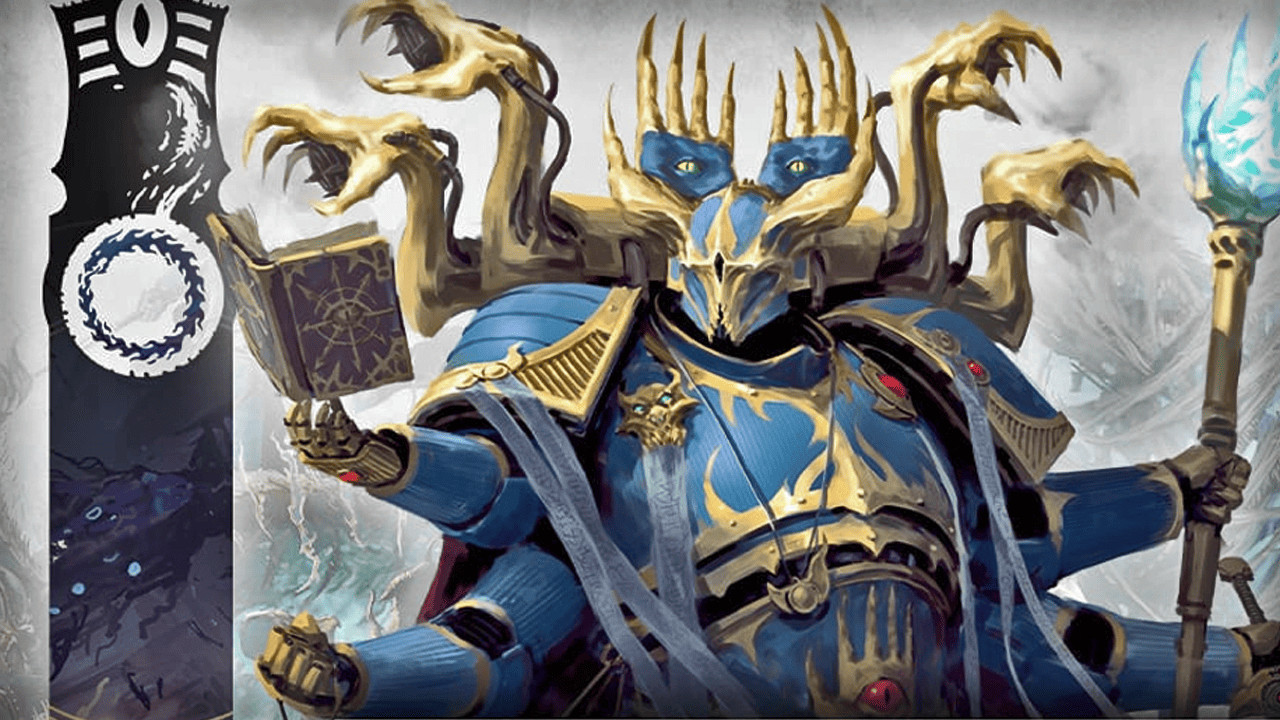
Despite Magnus’s attempts to protect his legion, their psychic powers spiraled out of control, causing rampant mutations and attracting the ire of the Emperor. The infamous event, the Burning of Prospero, saw their home world destroyed by the Space Wolves, and the Thousand Sons were forced to flee into the Warp.
Desperate, they pledged themselves to Tzeentch, who offered them stability in exchange for their loyalty. Magnus was transformed into a Daemon Primarch, and his legion became the chosen sorcerers of Tzeentch.
However, this pact came with a curse. Many of the Thousand Sons were turned into mindless Rubric Marines, their bodies reduced to dust and their souls trapped in their armor, forever bound to their sorcerer leaders.
Units & Tactics
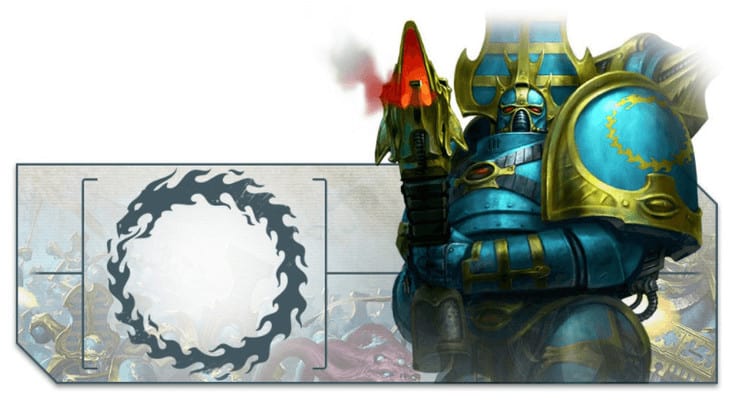
Their strategy revolves around the use of psychic powers to control the battlefield, disrupt enemy plans, and unleash devastating attacks. They rely on their sorcery to outmaneuver and overpower their enemies, making them one of the most unique and challenging armies to play.
If you want to learn how to play the Thousand Sons in Warhammer 40k, check out our guide on the army here! Or pick up their Combat Patrol Bundle and get hobbying right away!
The Appeal
For collectors and painters, the Thousand Sons offer an eye-catching aesthetic with their ancient Egyptian-inspired armor and arcane symbols. Their models are rich in detail, with plenty of opportunities for creative painting and customization. The blend of magic, tragedy, and power makes the Thousand Sons a compelling choice for those who enjoy the darker, more mystical aspects of the Warhammer 40K universe.
The World Eaters

Origins of the World Eaters
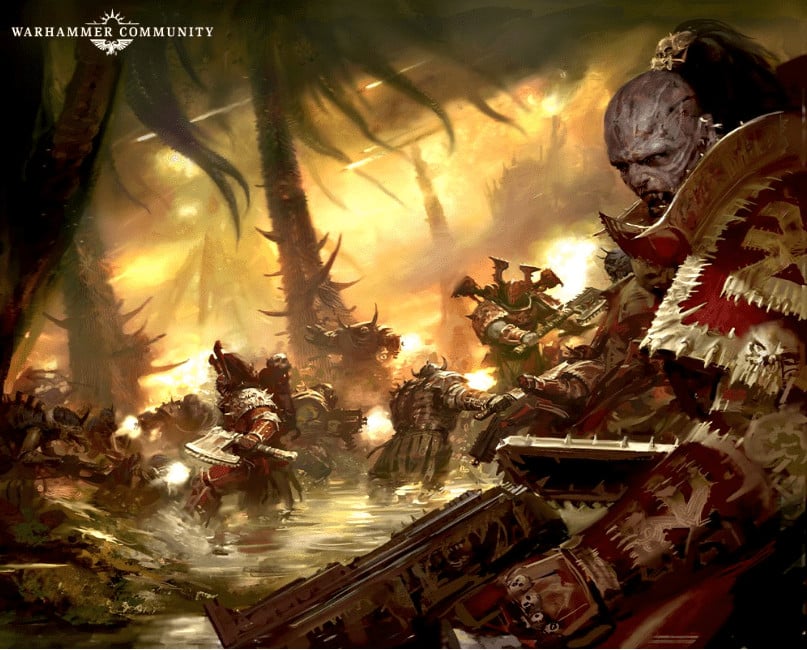
Angron’s influence on his Legion was profound. He introduced the “Butcher’s Nails,” a cybernetic implant that drove the warriors into uncontrollable fits of rage, perfect for close-quarters combat but at the cost of their sanity. Under Angron’s command, the World Eaters became known for their savage fighting style and lack of discipline, preferring to engage in melee combat rather than strategizing from afar.
Devotion to Khorne
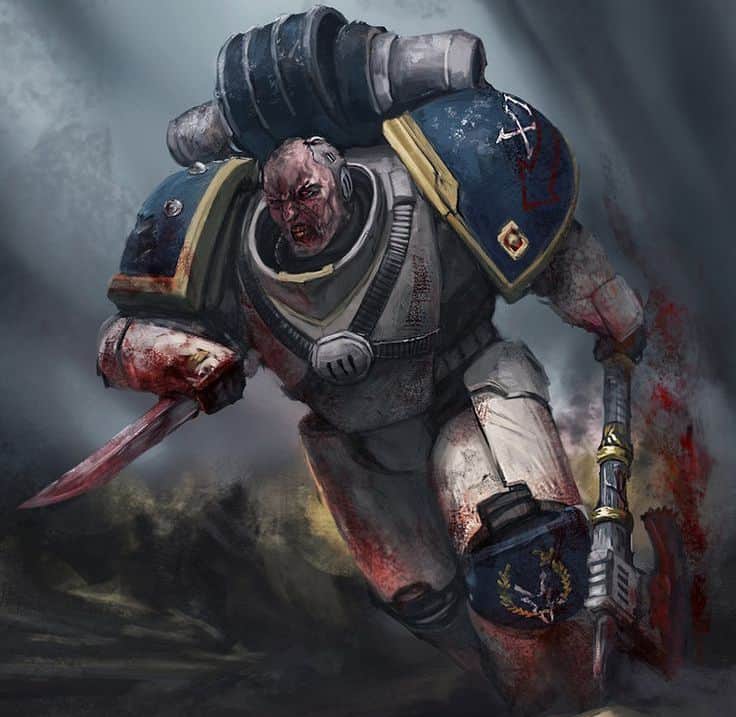
Their allegiance to Khorne was solidified during the Horus Heresy, a galaxy-spanning civil war that saw many Space Marine Legions turn against the Emperor. The World Eaters embraced Khorne’s creed wholeheartedly, becoming berserkers who fought not just to win battles but to offer as many skulls as possible to their god. This transformation only intensified their savagery and marked their complete fall from grace.
Tactics & Units
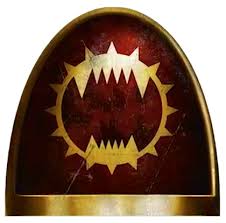
Key Units:
- Khorne Berzerkers: The backbone of any World Eaters army, these are elite warriors completely consumed by rage. Armed with chainaxes and pistols, they rush into battle with a singular purpose: to kill in Khorne’s name.
- Blood Slaughterers: These daemon engines are an embodiment of Khorne’s fury, designed to charge into enemy lines and wreak havoc with their deadly claws and weapons.
- Skulltaker: A renowned daemon of Khorne, often included in World Eaters forces, who specializes in decapitating enemy leaders and adding their skulls to Khorne’s throne.
- Chaos Lord: Leading the charge, these commanders are fearsome in their own right, often equipped with the Butcher’s Nails and dedicated to leading their troops in the front lines.
If you want to learn how to play the World Eaters in Warhammer 40k, check out our guide on the army here! Or pick up their Combat Patrol Bundle and get hobbying right away!
The Appeal
The World Eaters exemplify raw, unrestrained aggression in the Warhammer 40K universe. They’re the go-to faction if you’re looking for a force that thrives on close combat and embodies the chaotic fury of Khorne. Whether you’re a newcomer or a seasoned player, the World Eaters offer a rich, brutal, and exhilarating experience on the tabletop.
Chaos Knights
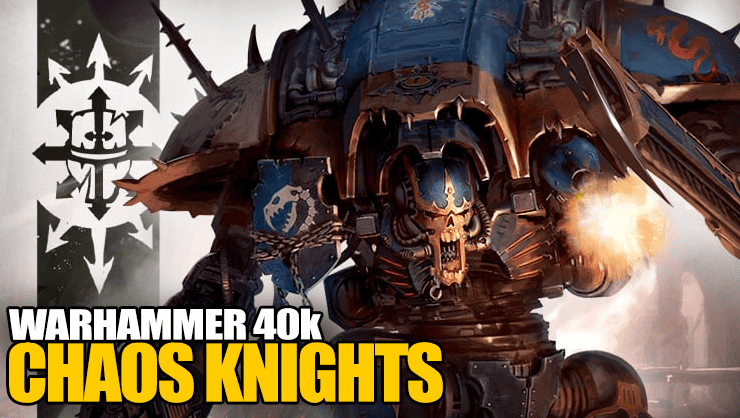
Origin & Background

Chaos Knights are adorned with grisly trophies, spikes, and chains, their once-noble forms now twisted into nightmarish engines of war. Each Chaos Knight reflects the dark god it serves, whether it’s Khorne’s blood-soaked rage, Nurgle’s pestilent decay, the arcane mutations of Tzeentch, or the hedonistic excess of Slaanesh.
Key Characteristics
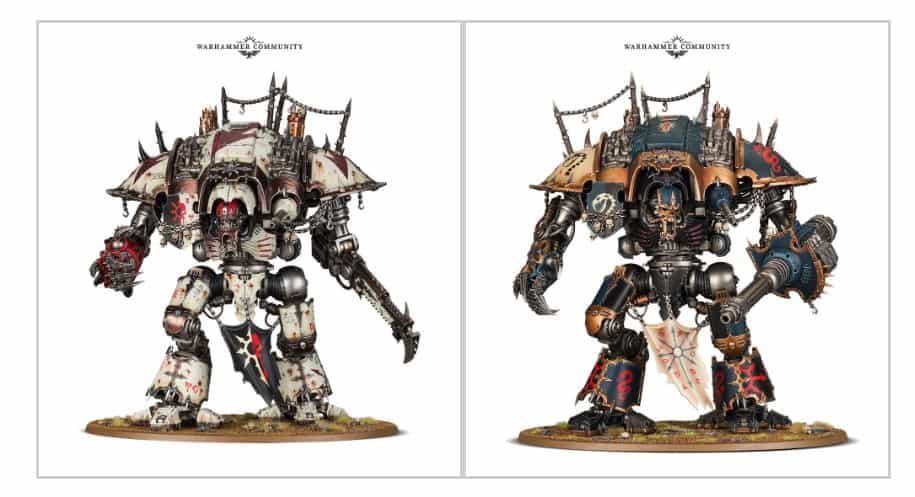
Each Chaos Knight is a force to be reckoned with, capable of single-handedly turning the tide of battle. Their presence on the battlefield is a psychological weapon as much as a physical one, instilling fear and dread in their enemies.
Tactics & Units

The Despoiler is a versatile knight, capable of both long-range fire support and close combat devastation. The Desecrator excels in taking down enemy Titans and other large targets, while the Rampager is a close-combat monster, ripping through enemy ranks with its melee weapons.
If you want to learn how to play the Chaos Knights in Warhammer 40k, check out our guide on the army here! Or check out their most recent Battleforce here to stay hobbying right away!
The Appeal
For hobbyists, Chaos Knights offers a unique challenge and an opportunity for impressive customizations. Their large, detailed models provide a canvas for elaborate paint schemes and conversions. The combination of their imposing size and intricate details makes them a centerpiece for any Chaos army.
Chaos Daemons
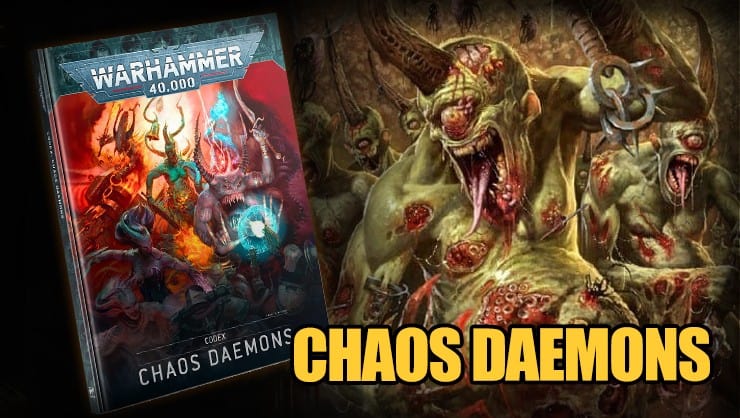
Role of Daemons in Chaos
Daemons are the foot soldiers of the Chaos gods, summoned into the material universe to wreak havoc and spread corruption. They are born from the Warp’s raw emotions and psychic energy, taking on forms that embody the essence of their patron gods. When the veil between reality and the Warp is thin, daemons can break through and manifest in real space, bringing destruction and chaos.
Khorne Daemons
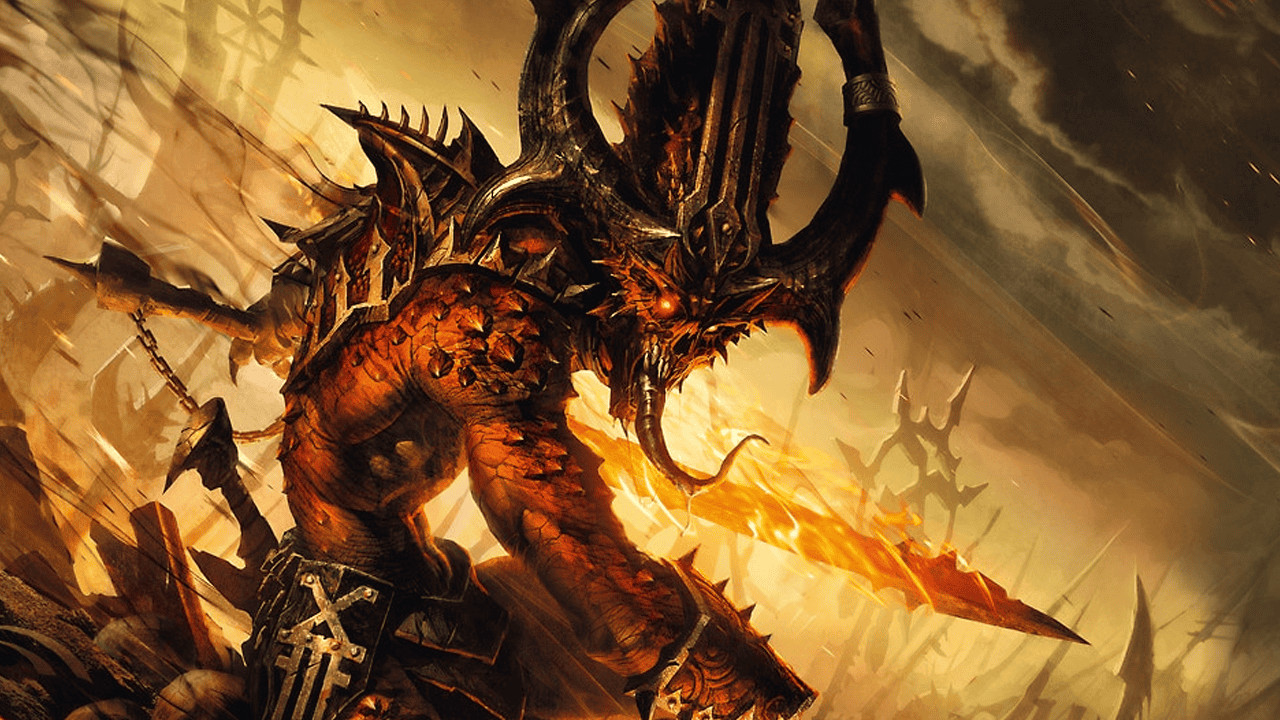
Slaanesh Daemons
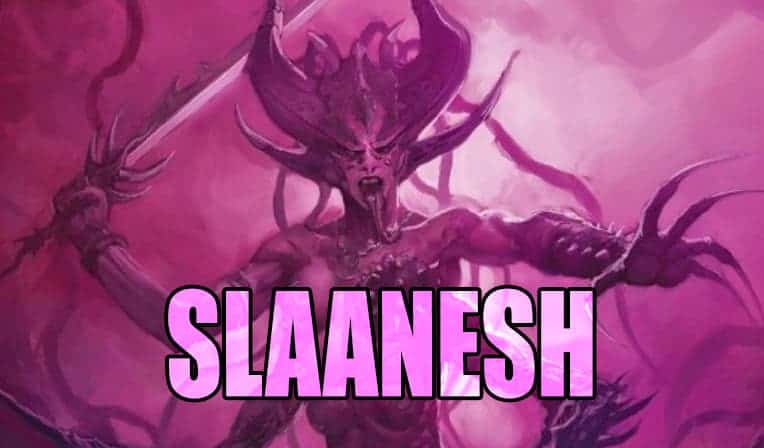
Tzeentch Daemons
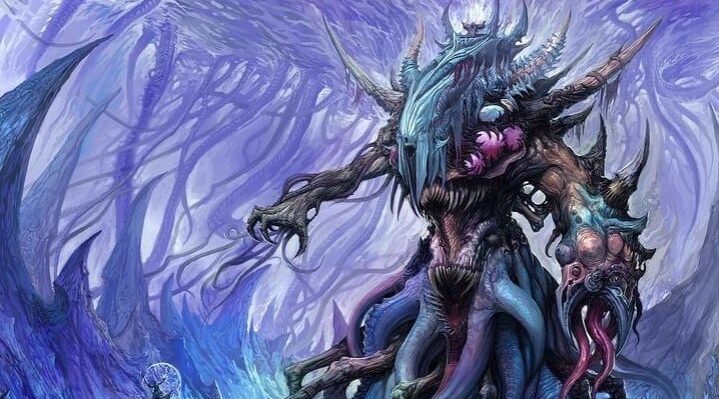
The Lords of Change, Tzeentch’s Greater Daemons, are formidable sorcerers capable of reshaping reality with their arcane powers. These daemons thrive on unpredictability and chaos, using their magical abilities to outmaneuver and confound their enemies. On the battlefield, Tzeentch’s daemons rely heavily on their psychic prowess, casting devastating spells to control the flow of combat.
Nurgle Daemons
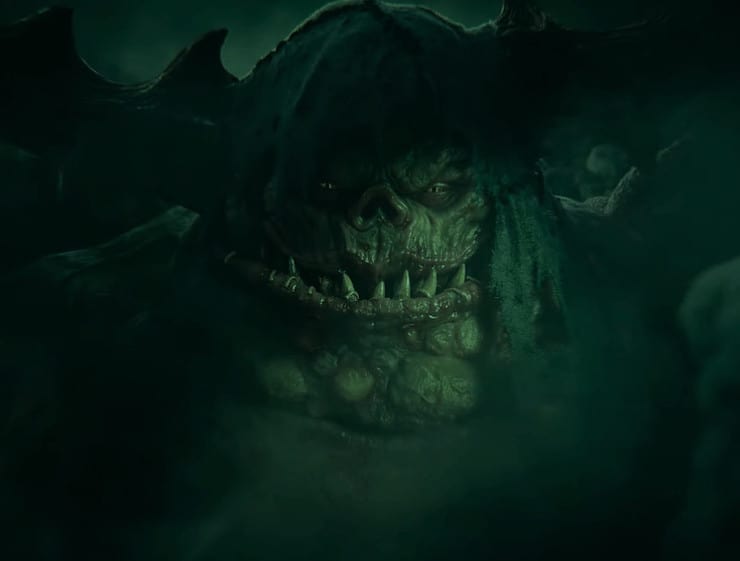
The Great Unclean Ones, Nurgle’s Greater Daemons, are massive, bloated creatures of filth and pestilence. They are tough to kill and can heal themselves and their allies, making them a significant threat on the battlefield. Nurgle’s forces often rely on attrition, slowly wearing down their enemies through sheer durability and the relentless spread of disease.
If you’re ready to unleash the raw power of the Warp, check out our Chaos Daemons guide for all the lore, strategies, and rules you’ll need. Or pick up their Combat Patrol Bundle and get hobbying right away!
Emperor’s Children
Origin & Background
The Emperor’s Children are the ultimate divas of Chaos Space Marines. Once the Emperor’s favorite perfectionists, these prima donnas fell hard for Slaanesh, the Chaos God of excess and sensory overload.
Led by their fabulous Primarch, Fulgrim, they’ve traded honor and loyalty for endless debauchery and ear-splitting sonic weapons. If you like your battles loud, flashy, and downright unhinged, this is your jam.
Key Characteristics

The Appeal
These guys thrive on high-risk, high-reward gameplay, specializing in perfectly executed attacks that leave enemies dazzled (or dead). With their Noise Marines and flair for sensory overload, Emperor’s Children bring a uniquely chaotic flavor to 40k.
Think you can handle their symphony of destruction? Check out our Emperor’s Children guide for all the rules, lore, and tips to play like a true rock god. Or pick up their Combat Patrol Bundle and get hobbying right away!
Dark Gods & Forces of the Warp

Confused? Don’t worry; we’ll break it all down for you. From the dark gods who rule the Warp to the corrupted Space Marines who serve them, we’ll cover everything you need to know about Warhammer 40K’s Chaos forces.
Before we dive in, if you need a broader overview of all the armies in the 40K universe, check out our full guide to Warhammer 40K factions. But if you’re ready to walk on the (very) dark side, let’s get started with the Warp.
The Warp

In the grimdark future of Warhammer 40K, faster-than-light travel isn’t about sleek starships zipping through hyperspace. Nope, it’s about tearing a hole in reality and plunging your spaceship into the chaotic maelstrom of the Warp.
Picture flying through a sea of nightmares, and you get the idea. Every time a ship enters the Warp, it’s a gamble. You need a Navigator (a mutant with a third eye to see safe paths), a functioning Gellar Field (an energy shield to keep the nastiness out), and a ton of luck.
The Warp is not just for travel, though. It’s the source of the most nefarious threats in the 40K universe. From this realm come the Chaos Gods and their legions of daemons, the reason for the civil war that split the Imperium and why the Emperor of Mankind is now a withered husk on the Golden Throne. The Warp is pure Chaos, constantly roiling and shifting, and it’s the playground of the four Chaos Gods.
Next, we’ll break down who these dark gods are and why they crave the souls of the living. Stay tuned as we explore the Pantheon of Chaos.
Chaos Gods
Now, let’s talk about the big players in the Warp: the Chaos Gods. The four main gods represent different aspects of Chaos and the darker side of mortal emotions and ambitions. They’re powerful, they’re terrifying, and they’re always at odds with each other. Here’s a quick rundown:
Khorne: The Blood God
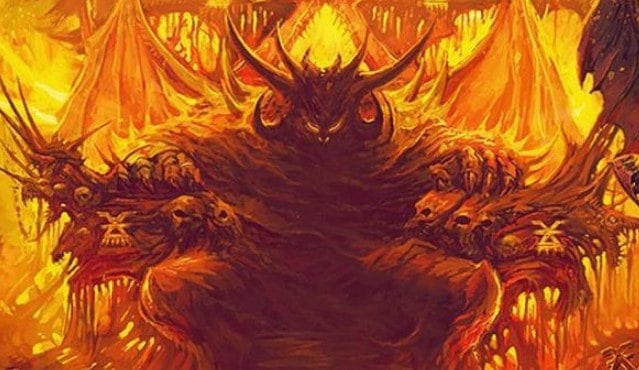
Nurgle: The Plague God
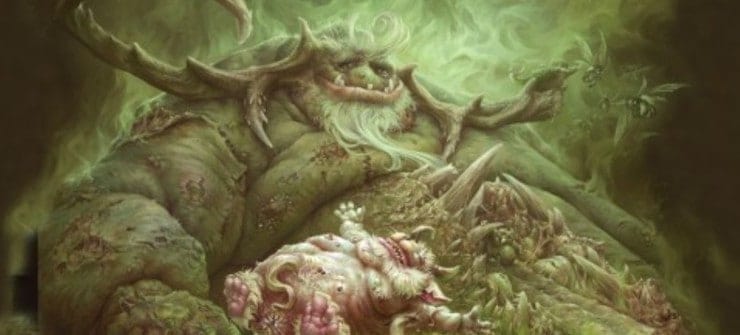
Tzeentch: The Changer of Ways
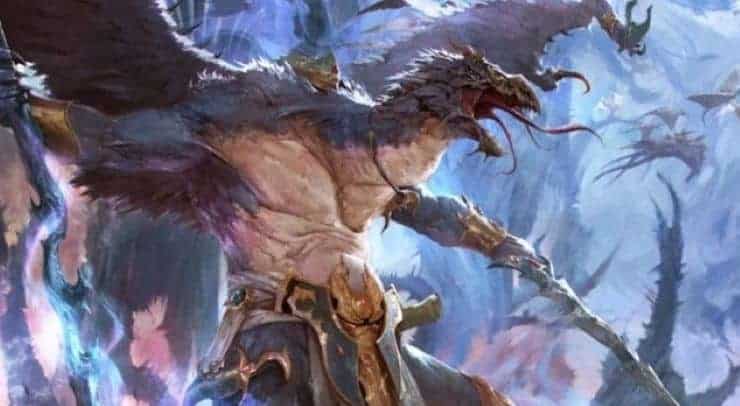
Slaanesh: The Prince of Pleasure
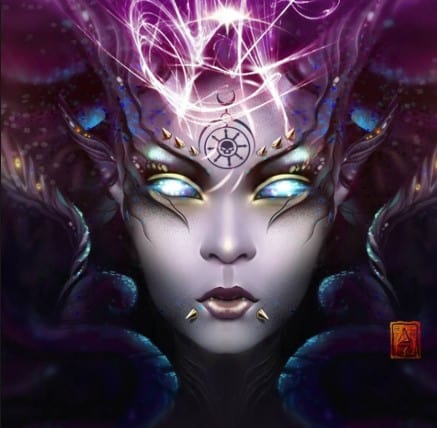
Each of these gods has a unique role in the 40K universe, drawing followers with promises of power, resilience, knowledge, and pleasure. But serving them comes at a steep price. Next, we’ll look at the mortal champions of these gods: the Chaos Space Marines.
Chaos Space Marines

The Horus Heresy was a cataclysmic event. Horus, the Emperor’s most trusted Primarch, was seduced by Chaos and led a rebellion against his father. Nine of the eighteen Space Marine Legions followed him, including:
- Sons of Horus
- Emperor’s Children
- Iron Warriors
- Night Lords
- Thousand Sons
- World Eaters
- Death Guard
- Word Bearers
- Alpha Legion
The heresy failed, but the traitor legions survived, fleeing into the Eye of Terror, a massive Warp storm. Here, time flows differently, and many of these warriors have been fighting the “Long War” ever since. The Chaos Space Marines are diverse, each legion serving a different Chaos god or pursuing their own twisted goals.
On the battlefield, Chaos Space Marines are fearsome opponents. They combine the skills and technology of their loyalist counterparts with the dark powers of Chaos. Each legion has its own style and specialty, from the World Eaters’ berserk fury to the Thousand Sons’ sorcerous might.
Frequently Asked Questions About Chaos in Warhammer 40k
What is the Most Powerful Chaos God in Warhammer 40K?
Each Chaos god has its own strengths and areas of influence, making it difficult to determine a single “most powerful” god. It often depends on the context and the specific battles or campaigns.
Can Chaos Space Marines Ally With Chaos Daemons?
Yes, Chaos Space Marines can ally with Chaos Daemons, creating versatile and powerful armies that combine the strengths of both factions.
Are Chaos Knights Good For Beginners?
Chaos Knights can be a good choice for beginners due to their relatively low model count and straightforward playstyle, though they require careful positioning and strategic planning.
What is the Main Weakness of Nurgle’s Forces?
Nurgle’s forces are typically slow-moving, making them vulnerable to long-range attacks and fast-moving enemies that can outmaneuver them.
How Do You Counter a Psychic-Heavy Thousand Sons Army?
To counter a Thousand Sons army, consider fielding units with strong psychic defenses and taking out their most powerful psykers first!
Final Thoughts on Warhammer 40k Chaos Factions
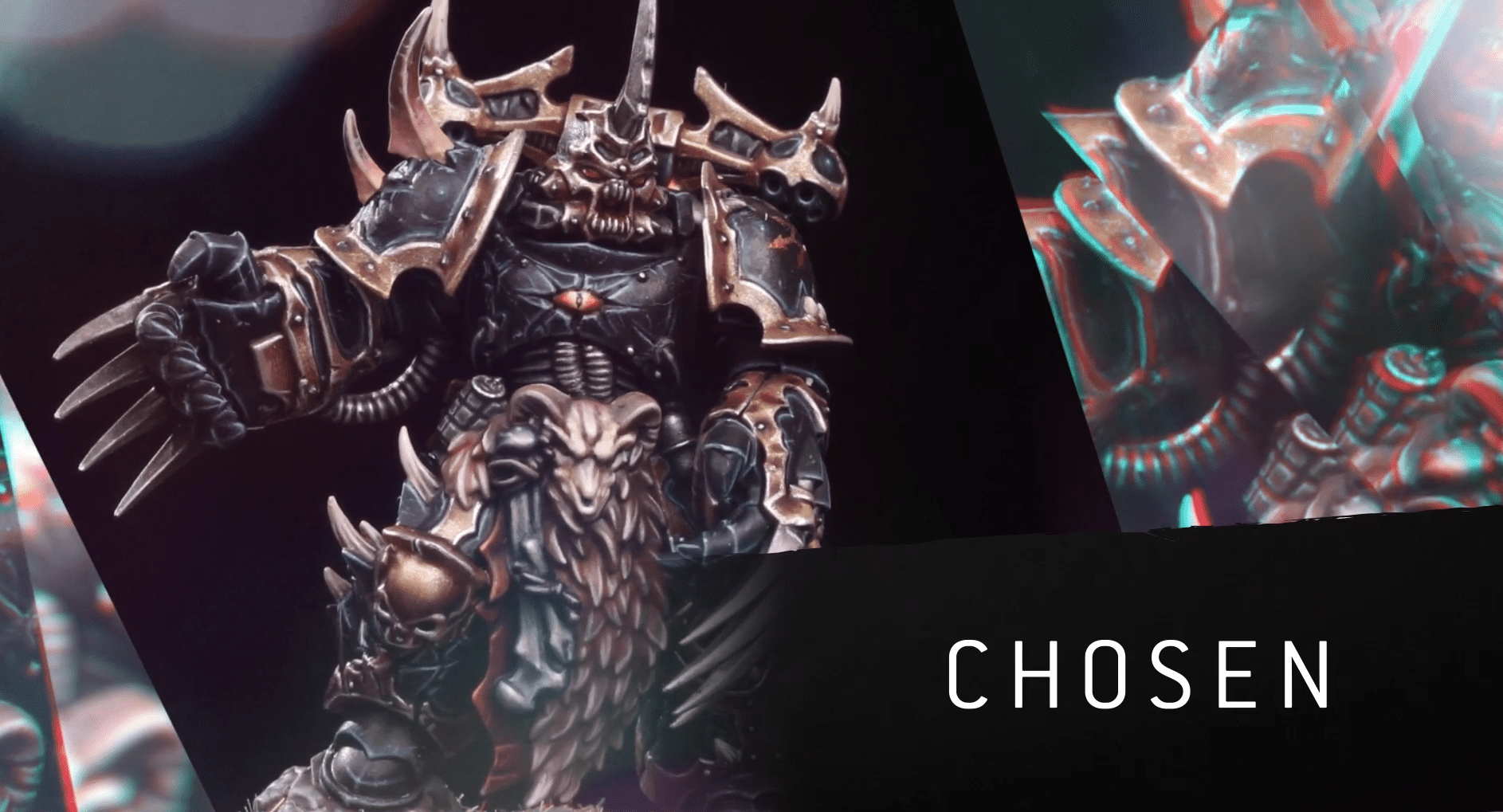
Warhammer 40k Factions Explained: A Complete Guide to Every Army
Do you like the Chaos factions in Warhammer 40k? Will you play any of the factions on the tabletop?
